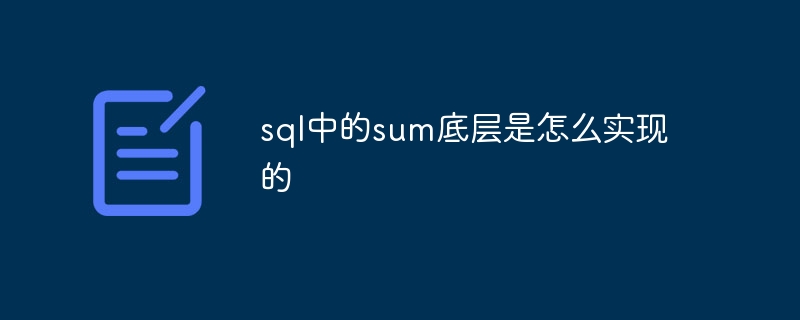How is the bottom layer of sum in sql implemented?
- 下次还敢Original
- 2024-05-09 09:24:15663browse
The underlying implementation principles of SUM in SQL include: preparation phase: allocate memory buffers and obtain qualified rows. Accumulation phase: Add the column values of each row to the accumulator (memory variable). Optimization phase: Use data structures to optimize traversal and skip special values. Result stage: Return the sum of the buffers as the final result.

The underlying implementation principle of SUM in SQL
The SUM operation is used in SQL to calculate the values in one or more rows. The sum of values. Its underlying implementation involves the following steps:
1. Preparation phase
- The database engine allocates a memory buffer to store the results.
- Get rows that match the query conditions from a data source (such as a table or view).
2. Accumulation phase
- For each row, the engine adds the value of the specified column to the accumulator in the buffer.
- The accumulator is a memory variable used to store the currently calculated sum.
3. Optimization phase
- The engine may use efficient data structures (such as B-trees) to optimize the traversal of rows.
- It can skip NULL or NaN values since they do not affect the sum.
4. Result Phase
- Once all rows have been traversed, the engine returns the sum of the buffers as the final result of SUM.
Implementation details:
- Accumulators typically use the same type as the column data type.
- The engine can process multiple threads in parallel to improve performance.
- For large data sets, the engine may use batch processing technology to improve efficiency.
- Some database systems may have specialized SUM implementations that are optimized for specific data types or situations.
The above is the detailed content of How is the bottom layer of sum in sql implemented?. For more information, please follow other related articles on the PHP Chinese website!

